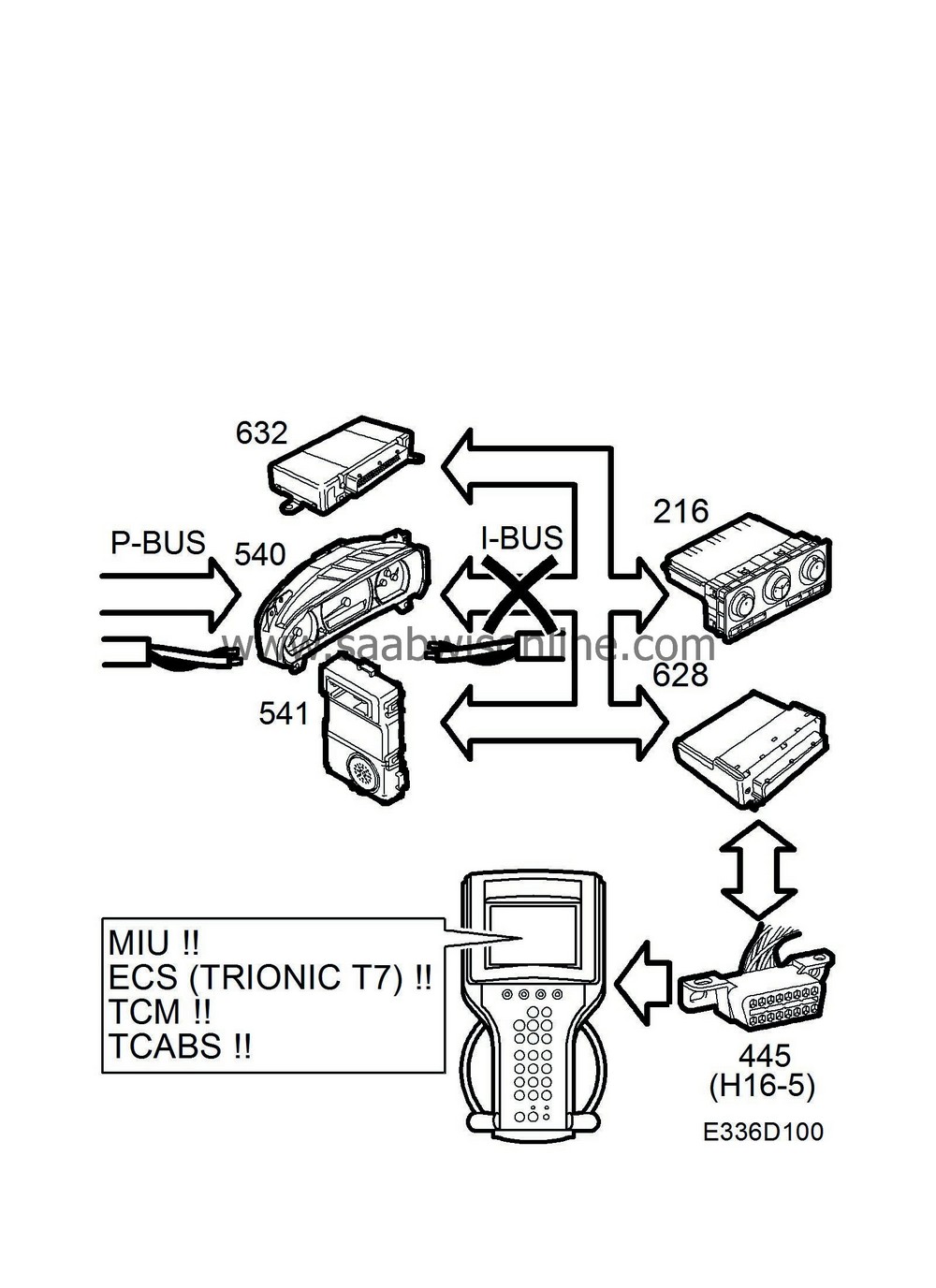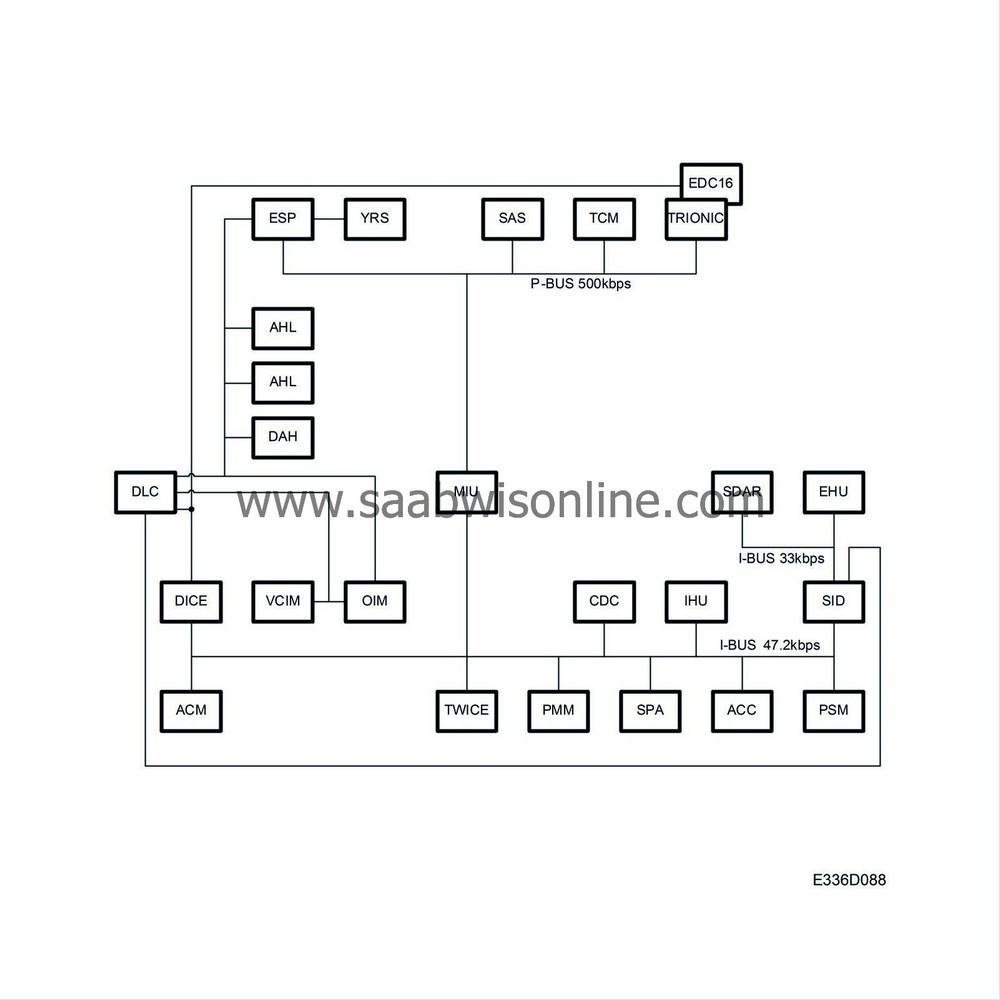PRE-RELEASE
Bus diagnosis
| Bus diagnosis |

In a bus system, all the units must be able to communicate with each other. For example, the engine cannot be started if Trionic is unable to receive immobilizer information from TWICE.
Bus faults can be caused by a bus lead breaking. This could result in one or more systems disappearing from the bus concerned (I or P), depending on where the break in the wiring harness occurred.
If a short circuit occurs in a bus lead, all systems will disappear from the bus concerned (I or P).
Note that if a short circuit occurs in the 2-lead I-bus, then the DICE module is the only bus system which can be contacted with the diagnostic tool.
In the event of a fault in grounding or power supply to one or more systems, these will cease to communicate.
| Permanent bus faults |
All diagnostic communication with systems connected to the P bus and the 2-lead I-bus is effected via the DICE module.
Irrespective of which system is contacted, the diagnostic tool will first check with the aid of the DICE that all systems in the car connected to a bus are awake and in communication.
If any control module connected to a bus is missing, the diagnostic tool will show this. This means that all control modules connected to a bus are communicating correctly unless the diagnostic tool indicates otherwise with a warning.
| Intermittent bus faults |
The Trionic and TCM continuously check that all control modules from which they obtain information communicate correctly. In the case of intermittent faults in bus communication with any of these systems, diagnostic trouble codes will be generated in the Trionic and TCM. The cause of the fault could be that the control module concerned has lost its power supply or one of the bus leads.
| Incorrect values on the bus |
Diagnostic trouble codes are set in Trionic and TCM if any information they receive from the bus has an incorrect value. The trouble code readout will refer to the faulty system.



